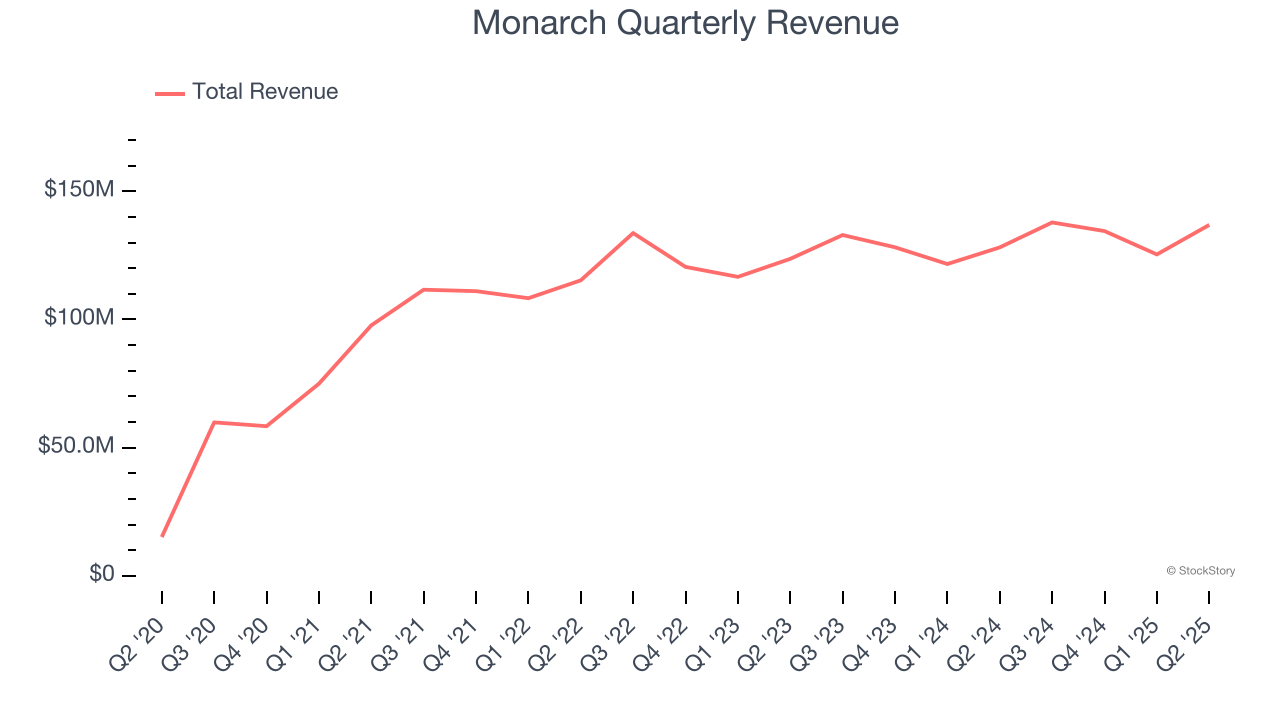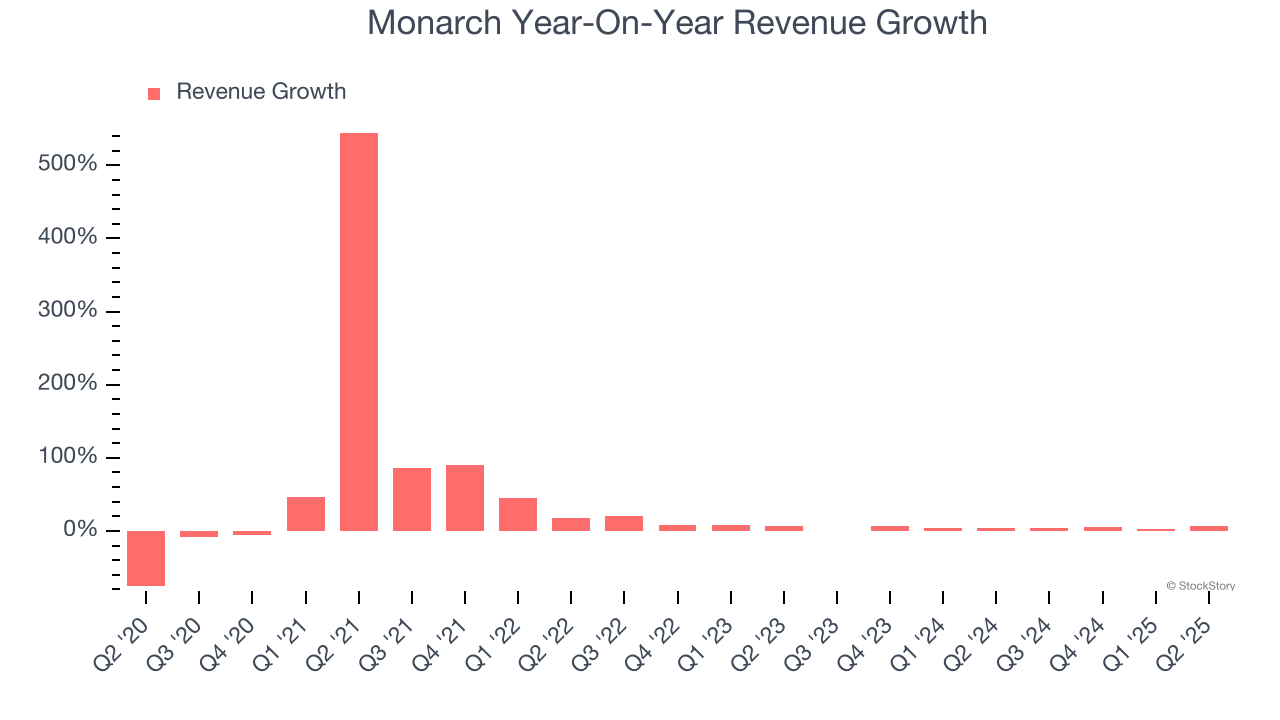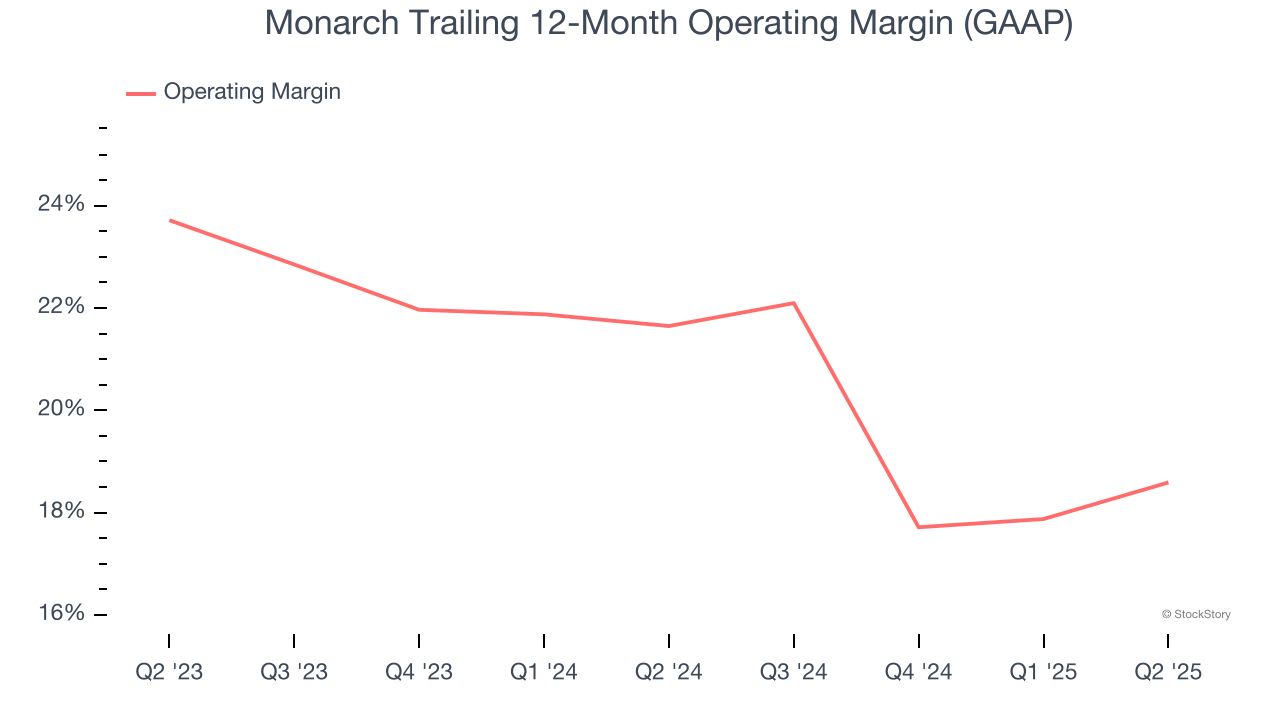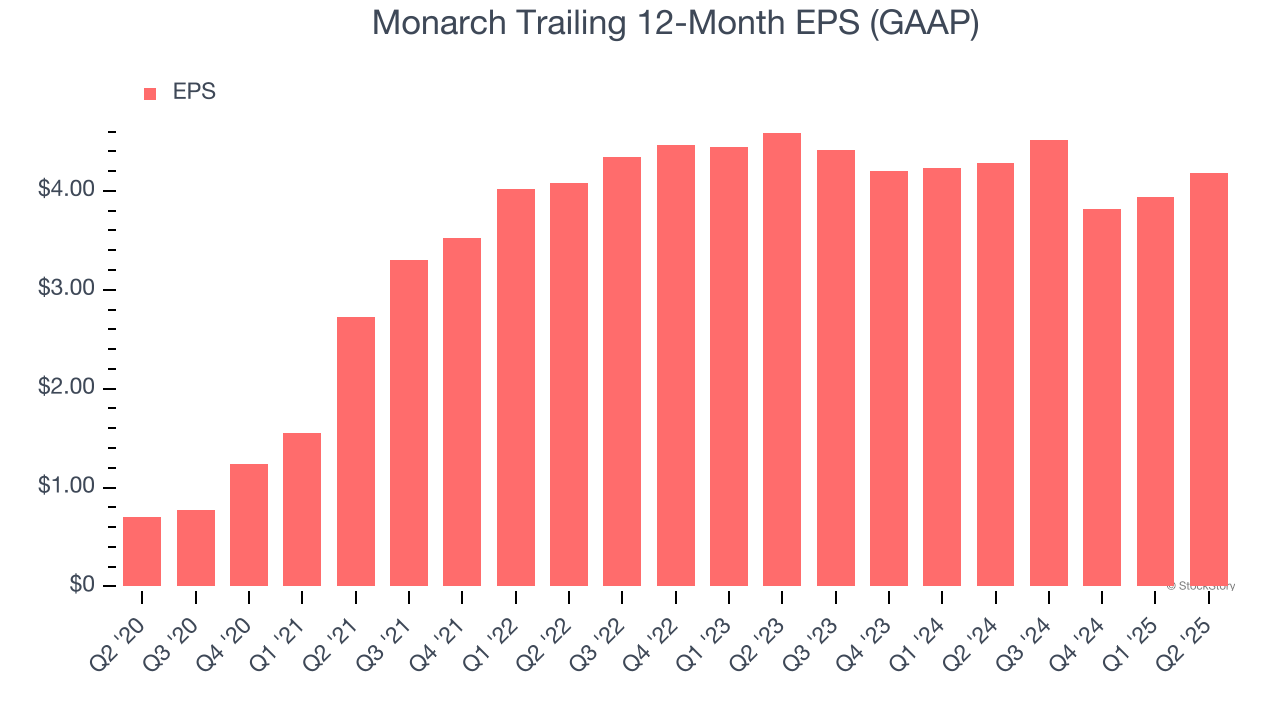
Luxury casino and resort operator Monarch (NASDAQ: MCRI) reported Q2 CY2025 results beating Wall Street’s revenue expectations, with sales up 6.8% year on year to $136.9 million. Its GAAP profit of $1.44 per share was 21.1% above analysts’ consensus estimates.
Is now the time to buy Monarch? Find out by accessing our full research report, it’s free.
Monarch (MCRI) Q2 CY2025 Highlights:
- Revenue: $136.9 million vs analyst estimates of $129.7 million (6.8% year-on-year growth, 5.5% beat)
- EPS (GAAP): $1.44 vs analyst estimates of $1.19 (21.1% beat)
- Adjusted EBITDA: $51.29 million vs analyst estimates of $44.36 million (37.5% margin, 15.6% beat)
- Operating Margin: 25.5%, up from 23% in the same quarter last year
- Market Capitalization: $1.59 billion
Company Overview
Established in 1993, Monarch (NASDAQ: MCRI) operates luxury casinos and resorts, offering high-end gaming, dining, and hospitality experiences.
Revenue Growth
Examining a company’s long-term performance can provide clues about its quality. Even a bad business can shine for one or two quarters, but a top-tier one grows for years. Thankfully, Monarch’s 16.4% annualized revenue growth over the last five years was decent. Its growth was slightly above the average consumer discretionary company and shows its offerings resonate with customers.

We at StockStory place the most emphasis on long-term growth, but within consumer discretionary, a stretched historical view may miss a company riding a successful new product or trend. Monarch’s recent performance shows its demand has slowed as its annualized revenue growth of 4% over the last two years was below its five-year trend. Note that COVID hurt Monarch’s business in 2020 and part of 2021, and it bounced back in a big way thereafter. 
Monarch also breaks out the revenue for its three most important segments: Casino, Dining, and Hotel, which are 58.1%, 23.5%, and 14% of revenue. Over the last two years, Monarch’s revenues in all three segments increased. Its Casino revenue (Poker, Blackjack) averaged year-on-year growth of 4.7% while its Dining (food and beverage) and Hotel (overnight stays) revenues averaged 1.7% and 3.2%.
This quarter, Monarch reported year-on-year revenue growth of 6.8%, and its $136.9 million of revenue exceeded Wall Street’s estimates by 5.4%.
Looking ahead, sell-side analysts expect revenue to grow 1.1% over the next 12 months, a slight deceleration versus the last two years. This projection is underwhelming and suggests its products and services will see some demand headwinds.
Unless you’ve been living under a rock, it should be obvious by now that generative AI is going to have a huge impact on how large corporations do business. While Nvidia and AMD are trading close to all-time highs, we prefer a lesser-known (but still profitable) stock benefiting from the rise of AI. Click here to access our free report one of our favorites growth stories.
Operating Margin
Operating margin is a key measure of profitability. Think of it as net income - the bottom line - excluding the impact of taxes and interest on debt, which are less connected to business fundamentals.
Monarch’s operating margin has shrunk over the last 12 months, but it still averaged 20.1% over the last two years, top-notch for a consumer discretionary business. This shows it’s an efficient company that manages its expenses effectively, and we wouldn’t weigh the short-term trend too heavily.

In Q2, Monarch generated an operating margin profit margin of 25.5%, up 2.5 percentage points year on year. This increase was a welcome development and shows it was more efficient.
Earnings Per Share
Revenue trends explain a company’s historical growth, but the long-term change in earnings per share (EPS) points to the profitability of that growth – for example, a company could inflate its sales through excessive spending on advertising and promotions.
Monarch’s EPS grew at an astounding 43% compounded annual growth rate over the last five years, higher than its 16.4% annualized revenue growth. This tells us the company became more profitable on a per-share basis as it expanded.

In Q2, Monarch reported EPS at $1.44, up from $1.19 in the same quarter last year. This print easily cleared analysts’ estimates, and shareholders should be content with the results. Over the next 12 months, Wall Street expects Monarch’s full-year EPS of $4.18 to grow 22.1%.
Key Takeaways from Monarch’s Q2 Results
We enjoyed seeing Monarch beat analysts’ EPS expectations this quarter. We were also glad its revenue outperformed Wall Street’s estimates. Zooming out, we think this was a good print with some key areas of upside. The stock traded up 6.6% to $93 immediately after reporting.
Indeed, Monarch had a rock-solid quarterly earnings result, but is this stock a good investment here? The latest quarter does matter, but not nearly as much as longer-term fundamentals and valuation, when deciding if the stock is a buy. We cover that in our actionable full research report which you can read here, it’s free.






